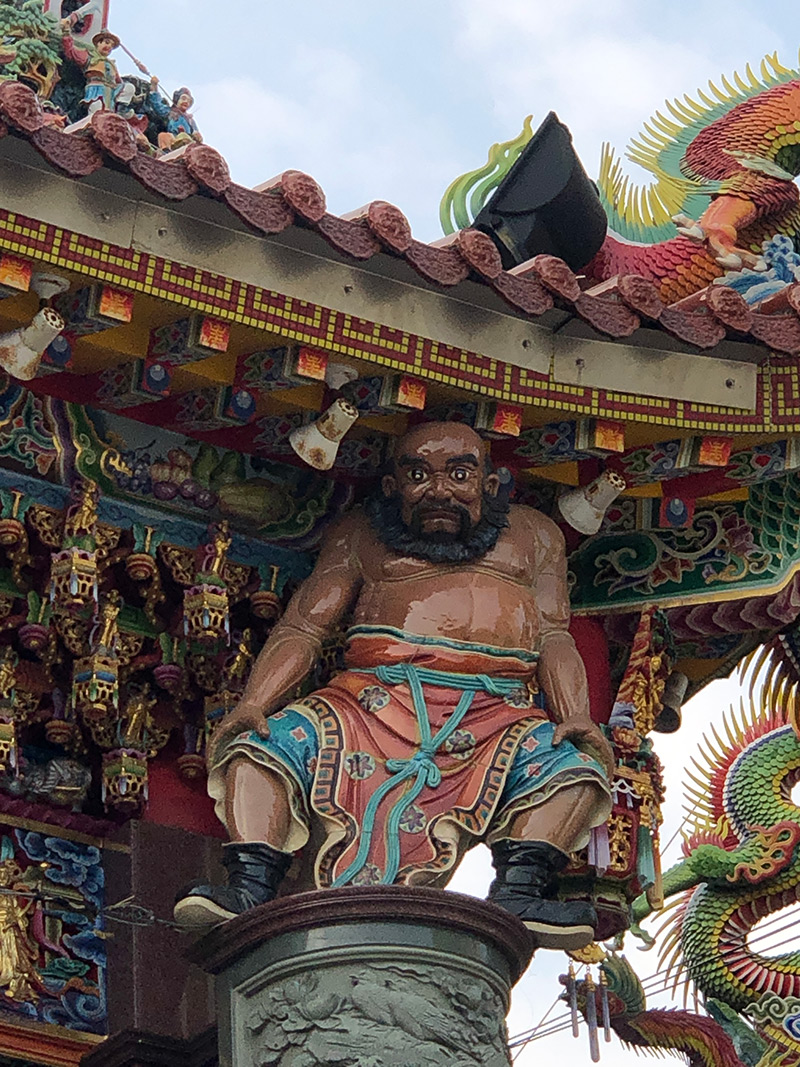El barrio antiguo de Zuoying
文、攝影/李晨萱
飄香一甲子的美味——汾陽餛飩
The Delicious Flavor of a Century: Fenyang Wontons
Un plato delicioso y tradicional: Wantán de Fenyang
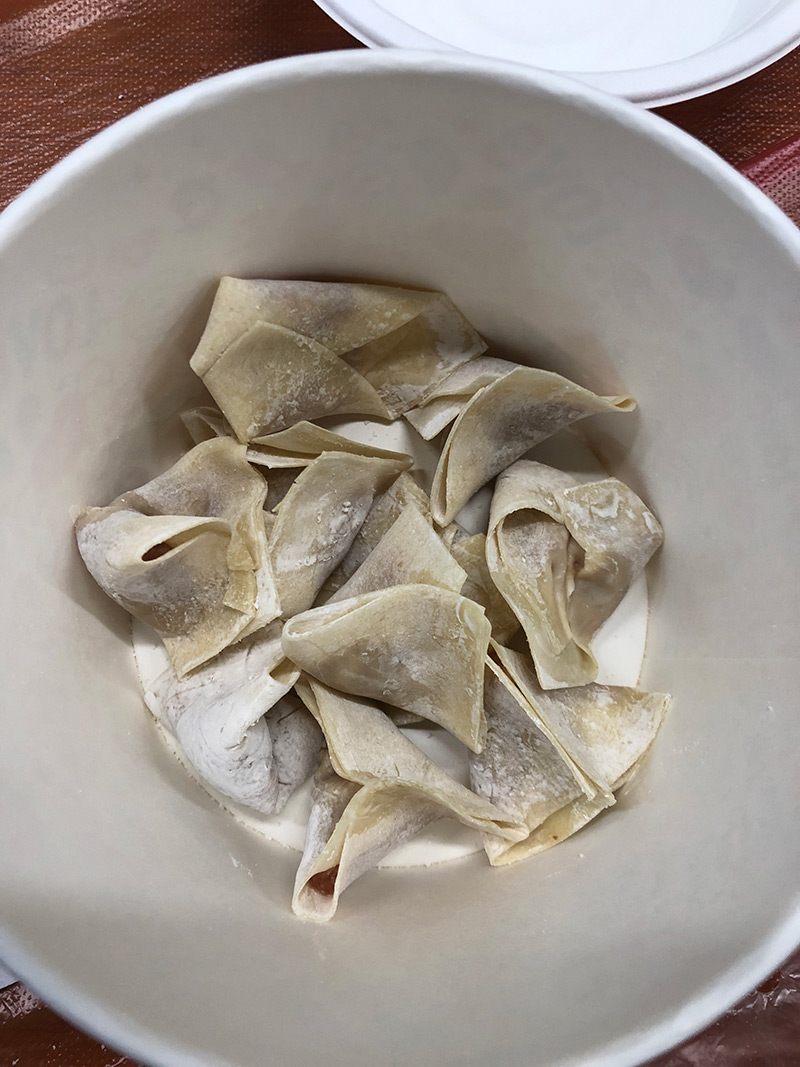
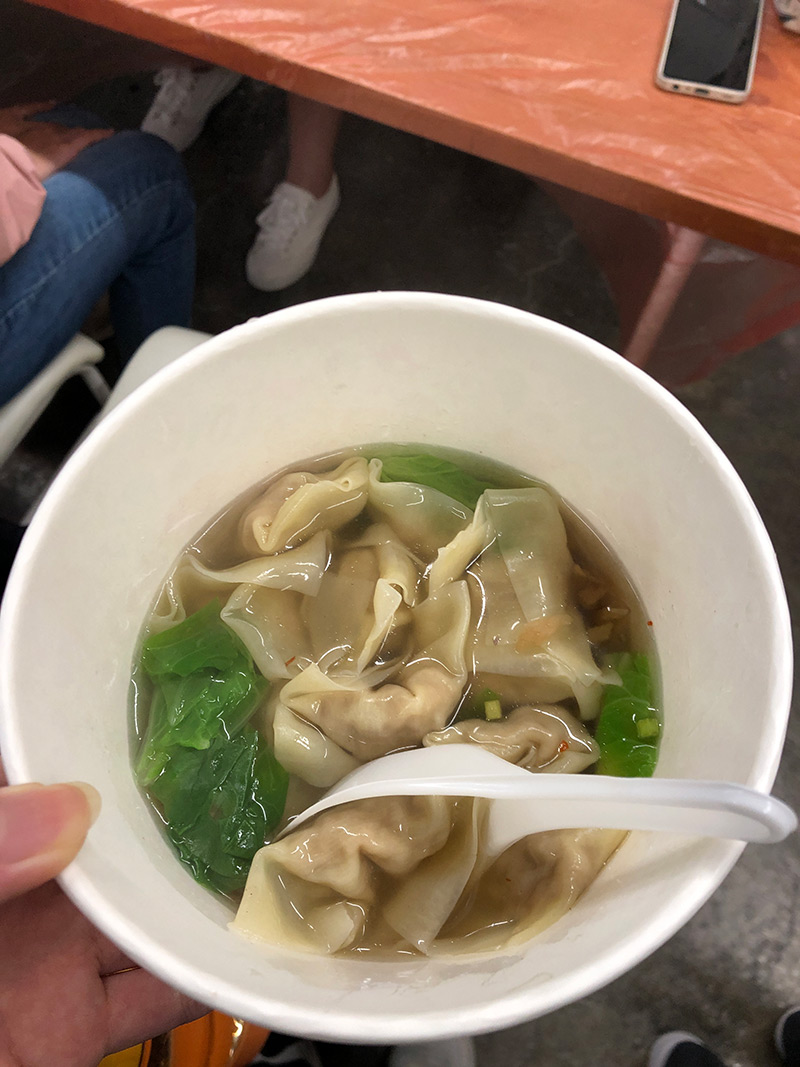
說到舊左營,不論是遊客亦或是在地高雄人,大家最先浮現在腦中的無非就是在地美食——汾陽餛飩。面皮相當薄卻又有十足的嚼勁,豬肉內餡新鮮不油膩,手工包製的方式,背後是超過六十年的美味傳承,老店一代代的堅持,讓這口味能夠在左營歷久不衰、飄香至今,並且成為許多在地人及非本地之遊客流連忘返的在地特色美食。
As for the Zuoying Old Town, the first thing that comes to mind is the local dish: Fenyang Wonton. The wrapper is thin yet elastic, and inside, the pork filling is fresh and not greasy. The hand-wrapped method has over 60 years of delicious heritage. The persistence of the old store has achieved great success with this excellent flavor. After so many years in Zuoying, it has become a traditional and popular dish for many tourists and locals alike.
En cuanto al barrio de Zuoying, lo primero que te viene a la mente es el plato local: el wantán de Fenyang. La masa es bastante fina pero elástico. En el interior el relleno de cerdo es fresco y no grasoso. El método envuelto a mano tiene más de 60 años de deliciosa herencia. La persistencia de la antigua tienda ha conseguido mucho éxito con este sabor buenísimo. Después de tantos años en Zuoying, se ha convertido en un plato tradicional y popular para muchos turistas o la gente local.
勝利路開拓
The History of the Development of Shengli Street
La historia del desarrollo de la calle Shengli
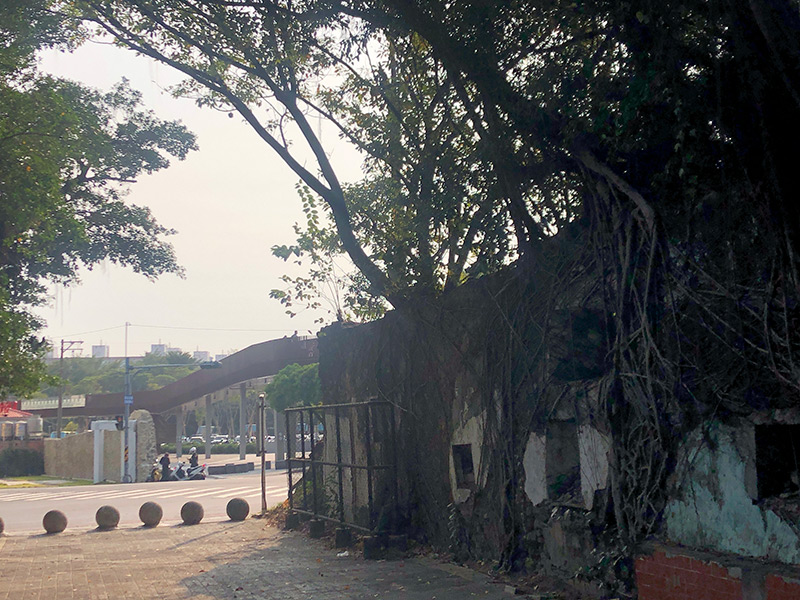
圖中城牆左側的通道即為位於高雄市左營區的勝利路,不是在地人可能不太清楚這條一般道路的由來和故事。過去這條路尚未開拓時,跟右側城牆是一體的,日治時代晚期為了運輸方便,便將此路打通節省通行時間,不過在地人卻認為此道路的開通對於此區域的衰落有一定的關聯,因為開拓勝利路就等於將神聖的龜山斷頭,成為了今日人們口中的大龜山和小龜山,因此當地人認為此路段措施對於風水問題無疑是有直接性的破壞。
The passage to the left of the ancient town wall in this image is Shengli Street in the Zuoying district of Kaohsiung City. Non-locals may not be familiar with the history of the origin of this street. In the past, before this road was developed, it integrated with the ancient city wall. In the late Japanese colonial period in Taiwan, this road was developed to facilitate transportation and save travel time. However, locals believe that the development of Shengli Street played a significant role in the decline of this area. Developing Shengli Street was seen as equivalent to severing the head of the sacred Guishan (Turtle Mountain). Now it has become the Great Guishan and the Little Guishan. Therefore, locals believe that this construction directly harms the neighborhood due to the issue of disrupting the "Feng Shui."
El pasaje a la izquierda de la muralla de la ciudad antigua en esta imagen es la calle Shengli en el barrio de Zuoying, la ciudad de Kaohsiung. Las personas que no son locales tal vez no conozcan la historia del origen de esta calle general. En el pasado, cuando esta carretera no estaba desarrollada, se integraba con la muralla de la ciudad antigua. A finales del período colonial japonés en Taiwán, esta carretera se desarrolló para facilitar el transporte y ahorrar tiempo de viaje. Sin embargo, la gente local cree que el desarrollo de la calle Shengli tiene un papel importante en el declive de esta área. Debido a que desarrollar la calle Shengli equivale a cortar la cabeza de la montaña sagrada Guishan. Ahora se ha convertido en la Gran Montaña Guishan y la Pequeña Montaña Guishan. Por lo tanto, la gente local cree que esta construcción daña directamente a este barrio por el problema de destrucción del “Feng Shui”.
舊城城牆
The Ancient Town Wall
La muralla de la ciudad antigua

城牆的建築材料主要以珊瑚礁石為大宗,石頭間相互緊密連接成為現今依舊屹立不搖的堅硬城門,因為過去當地為珊瑚礁岩地形,故使用此材料作為主要建材。面對此側城門的就是當地鼎鼎大名的蓮池潭,因為過去河畔周邊種植荷花而得其名,另外,現在還能看到許多民眾在蓮池潭上進行水上活動,例如刺激的滑水運動項目。
The materials used in the construction of the ancient city wall are primarily sourced from coral reefs. The stones are closely fitted together to form a solid and robust gate for the ancient town. This is because, in the past, the local terrain was composed of coral reefs. Hence, this natural and local material was utilized as the main building material. In front of the gate on this side of the ancient town lies the famous Lotus Pond. In the past, lotus flowers were planted around this large pond. Additionally, nowadays, one can observe many people engaging in various water activities in the Lotus Pond, such as thrilling water skiing.
Los materiales de la construcción de la muralla de la ciudad antigua son principalmente de los arrecifes de coral. Las piedras están estrechamente unidas entre sí para formar una sólida y fuerte puerta de la ciudad antigua. Debido a que en el pasado el terreno local era de los arrecifes de coral. Por eso, se utilizó este material natural y local como el material principal en esta construcción. Enfrente de la puerta de este lado de la ciudad antigua, se encuentra el famoso Estanque de Lotos. En el pasado, se plantaban las flores de loto alrededor de este estanque grande. Además, ahora se puede ver muchas personas jugando las diferentes actividades acuáticas en el Estanque de Lotos, por ejemplo, el esquí acuático emocionante. those would have to be imported from China. The same happened with timber since sawmills were unavailable. Even well into the Japanese era, timber was still imported since the best Taiwanese cypress and other trees were exclusively reserved for the Japanese market. The only locally procured materials were clay bricks, coral limestone, and lime. As for the people who built them, masters and craftsmen were also from China, and that’s why these houses display a traditional southern Chinese style.
城邑左營慈濟宮
Tzu Chi Temple in Zuoying
El templo de Tzu Chi Zuoying
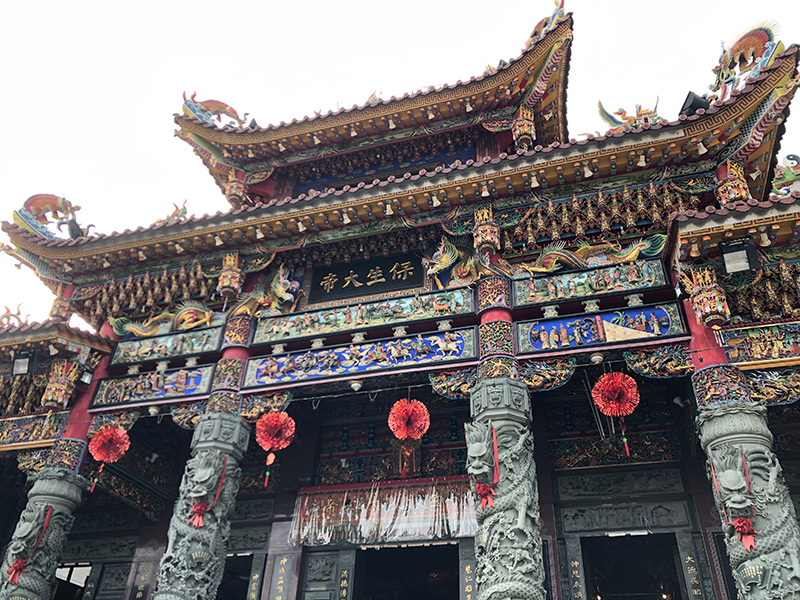
最後一站來到位於蓮池潭河畔、龍虎塔附近的左營慈濟宮,匾額上清晰寫著此廟宇的主祀「保生大帝」,正門的四根石柱上刻印了許多令人讚嘆的精美石雕,就算經過多年的時間,匠師巧奪天工的技藝仍舊傳承至今,讓後人有機會用雙眼親自欣賞到,和石雕單一色彩形成強烈對比的莫過於寺廟上方的交趾陶工藝(如下圖)。交趾陶起源源於唐三彩,在台灣多出現在廟宇等傳統、古色古香的建築高處部分,另外下圖交趾陶有上釉,因此呈現亮麗的色彩。
The final stop is the Tzu Chi Temple in Zuoying, located on the edge of the Lotus Pond and close to the Dragon and Tiger Pagodas. The plaque in the center of the temple clearly indicates that it is primarily dedicated to Emperor Baosheng. There are many exquisite stone carvings on the four stone pillars in front of the main entrance. After so many years, the skill of the craftsmen is still astonishing. What strongly contrasts with the monochrome stone carvings is the Cochin ceramic craftsmanship at the top of the temple (as shown in the following photo). Cochin ceramics have their origins in Tang Sanchai. In Taiwan, they often appear on the tops of traditional and ancient buildings, such as temples. Furthermore, the Cochin ceramic in the following image is glazed, displaying brighter and more vivid colors.
La última parada es el Templo Tzu Chi Zuoying, que se encuentra en la orilla del Estanque de Lotos y cerca del Torre del Dragón y el Tigre. La placa en el centro del templo indica claramente que este templo está principalmente dedicado al Emperador Baosheng. Hay muchas tallas de piedra estupendas grabadas en los cuatro pilares de piedra enfrente de la entrada principal. Después de tantos años, la habilidad de los artesanos todavía es asombrosa. Lo que contrasta fuertemente con solo un color en las tallas de piedra es la artesanía de cerámica de Cochín en la parte más alta del templo (como la foto siguiente). La cerámica de Cochín tiene el origen de Tang Sanchai. En Taiwán, a menudo aparece en las partes superiores de edificios tradicionales y antiguos como los templos. Además, la cerámica de Cochín en la imagen siguiente está vidriada, por lo que muestra colores más brillantes y vívidos.extravagance and wealth. It is calculated to be at least nearly two hundred years old, and there’s also photographic evidence from the 1870’s by a French engineer.
The mansion of the Yu family (located in Yee-chia, pic. 7) features finely cut scale-shaped and hexagonal limestones as the lower wall of the façade (pic. 8~9), suggesting approximately two hundred years since they resemble the design of the North Gate (1825).
